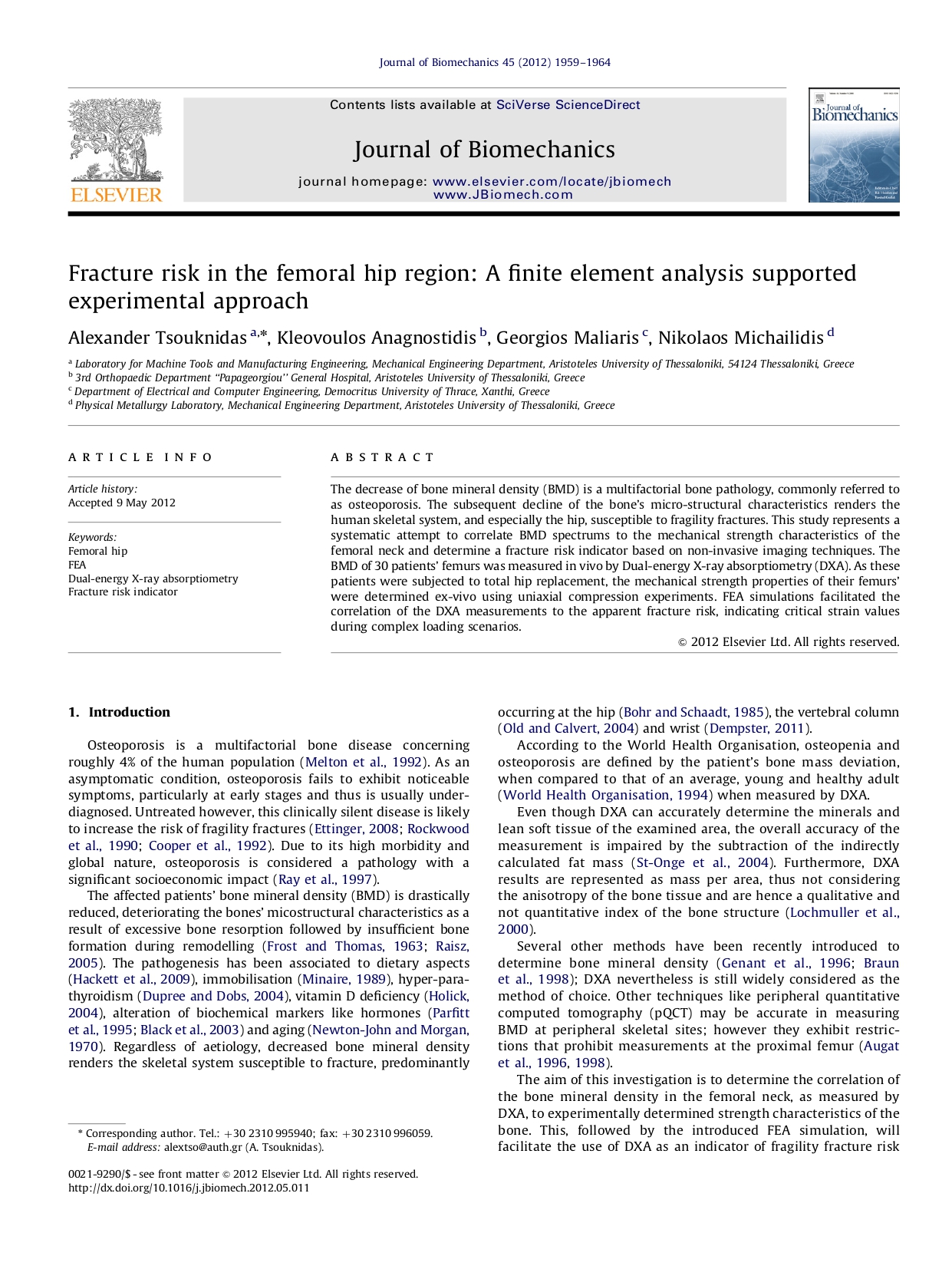Τitle
Fracture risk in the femoral hip region: A finite element analysis supported experimental approach
Fracture risk in the femoral hip region: A finite element analysis supported experimental approach
Journal of Biomechanics, 45 (11), pp. 1959-1964.
The decrease of bone mineral density (BMD) is a multifactorial bone pathology, commonly referred to
as osteoporosis. The subsequent decline of the bone’s micro-structural characteristics renders the
human skeletal system, and especially the hip, susceptible to fragility fractures. This study represents a
systematic attempt to correlate BMD spectrums to the mechanical strength characteristics of the
femoral neck and determine a fracture risk indicator based on non-invasive imaging techniques. The
BMD of 30 patients’ femurs was measured in vivo by Dual-energy X-ray absorptiometry (DXA). As these
patients were subjected to total hip replacement, the mechanical strength properties of their femurs’
were determined ex-vivo using uniaxial compression experiments. FEA simulations facilitated the
correlation of the DXA measurements to the apparent fracture risk, indicating critical strain values
during complex loading scenarios.
